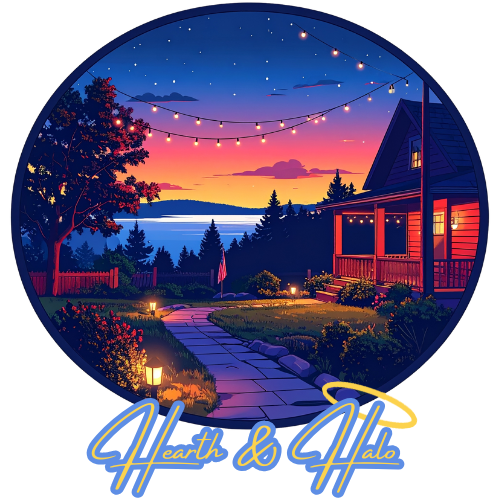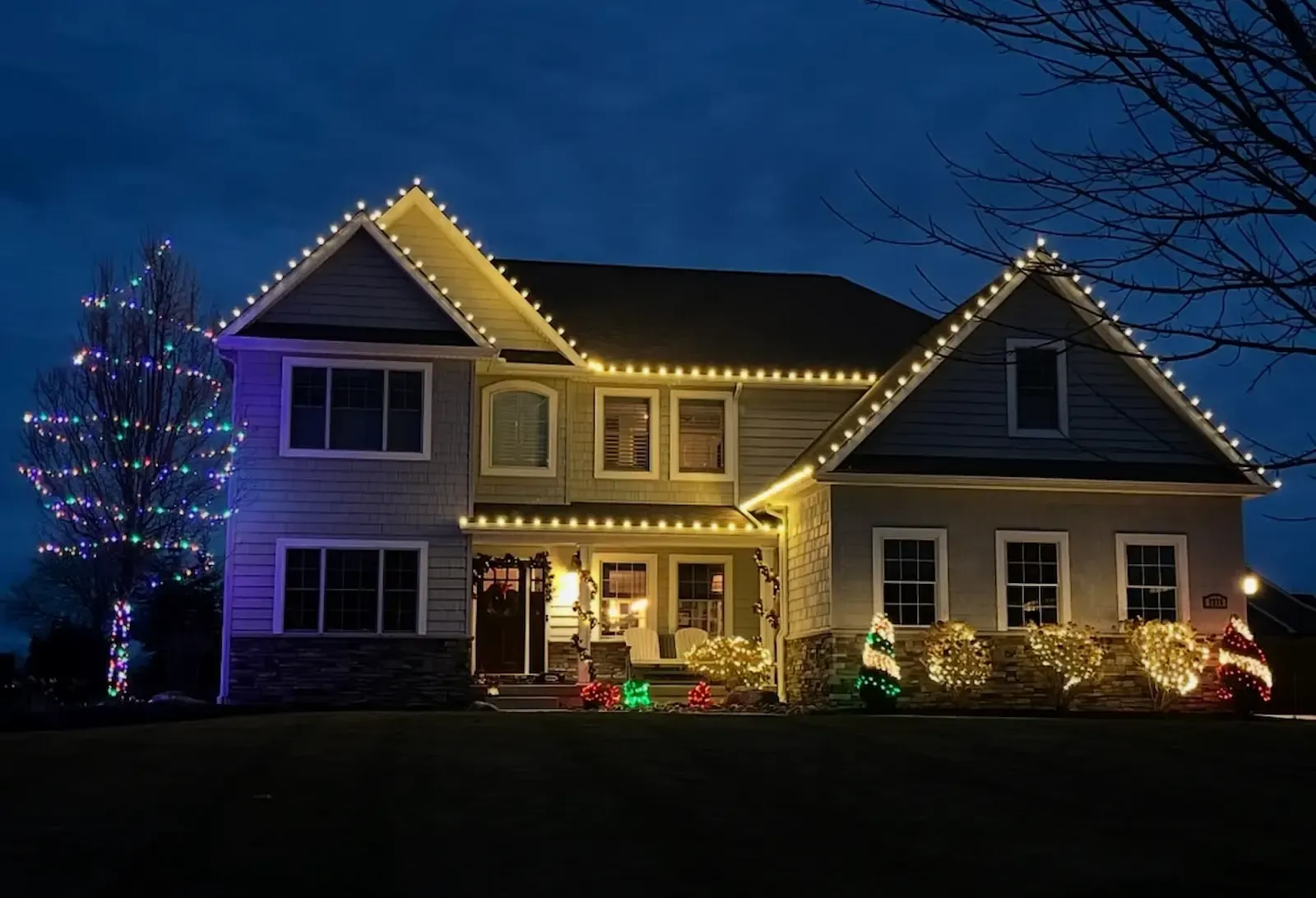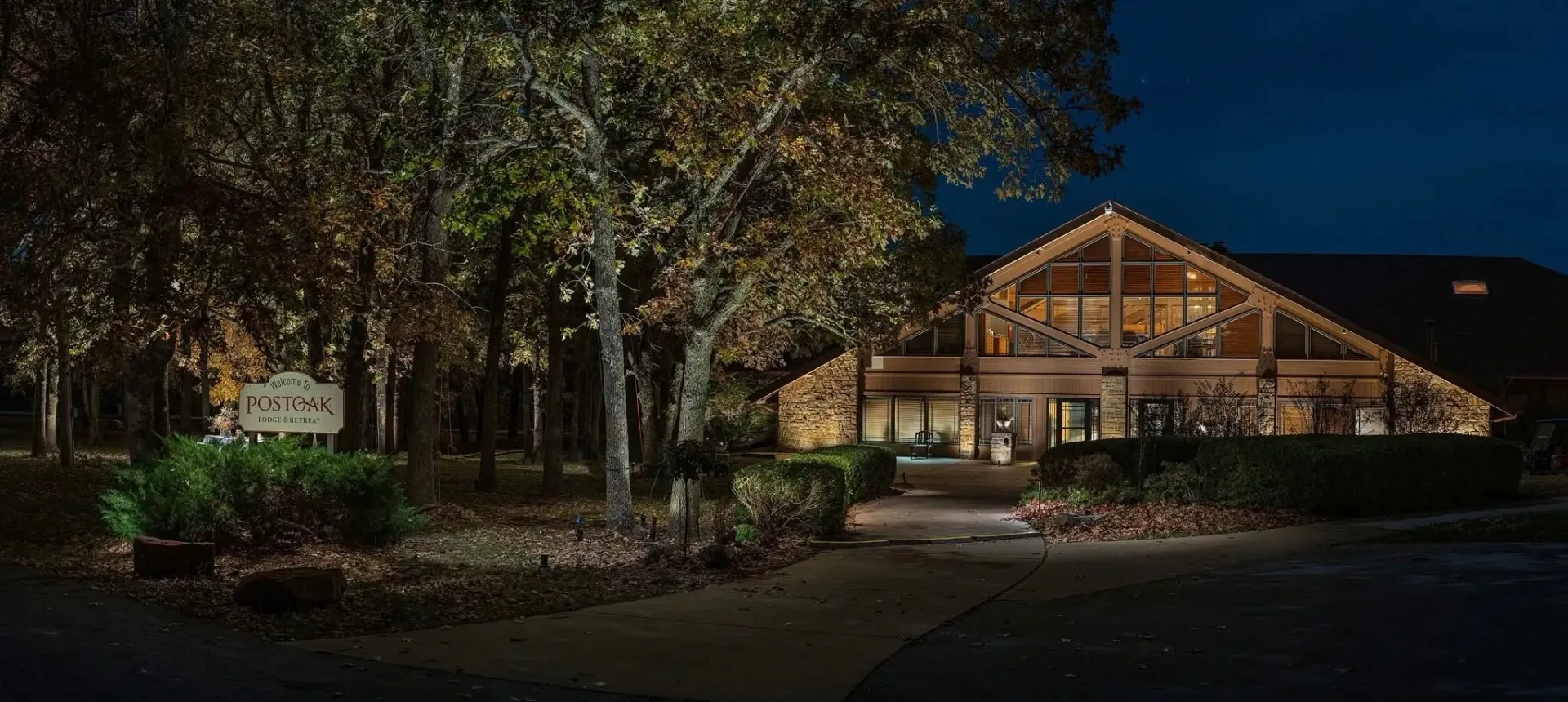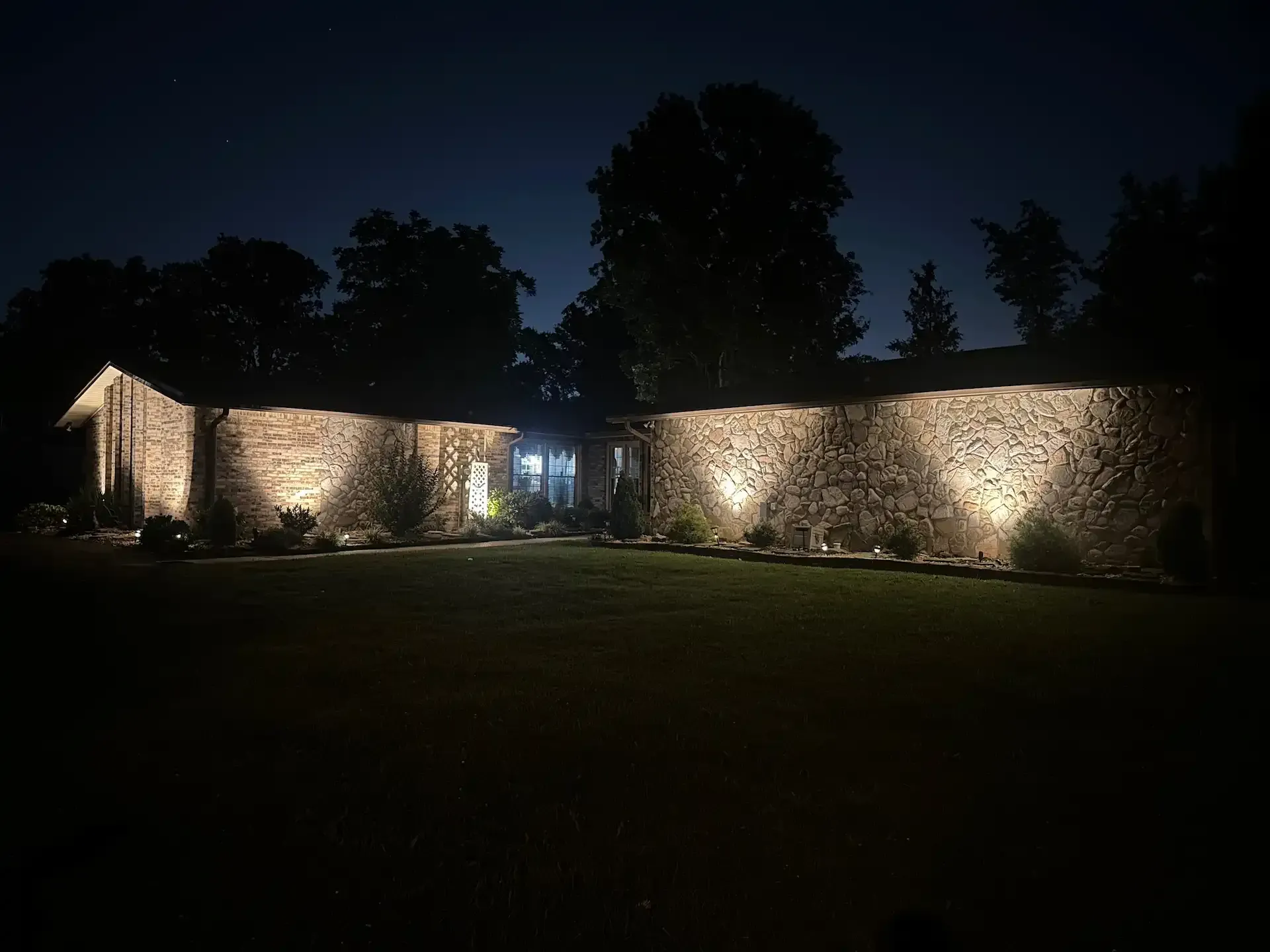If your cameras show grainy, blown‑out, or too‑dark footage at night, lighting—not the camera—is usually the fix. This post explains how professional landscape lighting improves real‑world security: clearer video, safer walkways, and fewer blind spots—without turning your yard into a stadium.
At Hearth & Halo, we design and install camera‑friendly lighting that balances brightness, color, and aim. We work across Erie County and Niagara County with fast, reliable service.
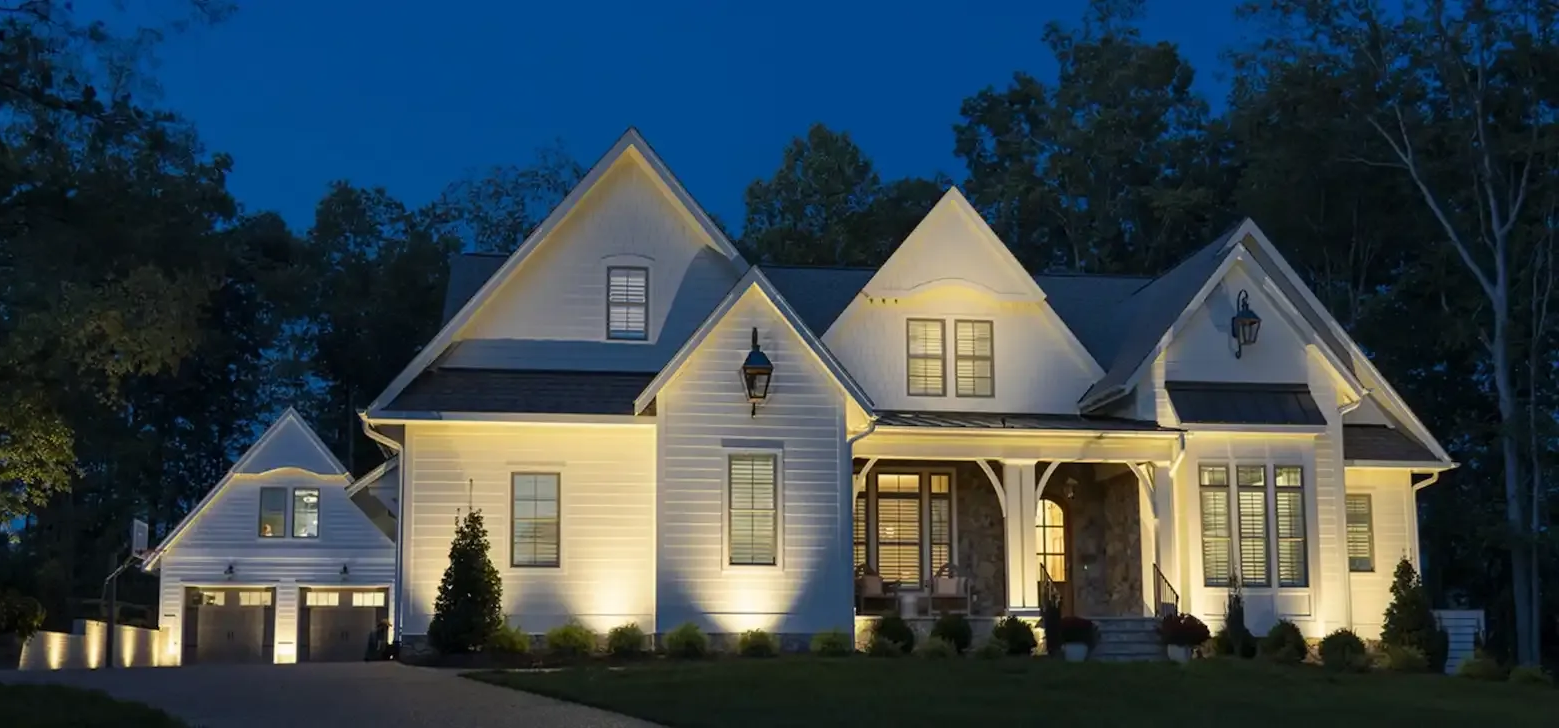
Serving Depew, Kenmore, and Orchard Park in Erie County—and Lockport, Sanborn, and Youngstown in Niagara County.
Key Takeaways
- Balanced lighting sharpens camera footage by reducing IR bloom, noise, and motion blur.
- Security improves with visibility: well‑lit entries, paths, and perimeter reduce hiding spots.
- Design > watts: beam control, Kelvin, and distribution matter more than raw brightness.
- Pro wiring survives winters, avoiding nuisance trips and dead zones after storms.
- Fast quotes: text a photo for a same‑day estimate across Western NY.
What You’ll Learn
- Why cameras struggle at night and how lighting solves it.
- Decision factors that determine a security‑ready lighting plan.
- Option trade‑offs between DIY kits and professional systems.
- Risks and red flags—and how we prevent them.
- Our high‑level approach to camera‑aligned lighting.
- Local notes for Erie and Niagara Counties.
Main Content
Background/Context
Most security cameras switch to IR at night, which can cause glare, haloing, and blur—especially with reflective siding, wet driveways, or snow. A camera‑aware lighting plan provides even, low‑glare illumination that keeps cameras in color mode longer and improves exposure.
Key principles:
- Even distribution beats hotspots. Avoid bright pools surrounded by darkness.
- Color temperature around 2700K–3000K keeps scenes natural and reduces harsh contrast.
- Aim and shielding keep direct light out of lenses and windows.
- Power and durability ensure the system stays on when weather is worst.
Decision Factors
Before you choose fixtures, evaluate:
- Camera locations and fields of view: Entries, driveways, side yards, and back gates—where do you need identification vs. detection?
- Ambient conditions: Nearby streetlights, reflective surfaces, and snow cover that can bounce light.
- Voltage drop and distance: Long runs increase resistance; plan wire gauge and transformer taps to manageV=I×R.
- Fixture quality: Brass or marine‑grade housings with sealed optics outperform thin aluminum/plastic in freeze–thaw.
- Glare control: Louvers, shrouds, and careful tilt prevent flares in camera lenses.
- Controls: Photocell + timer or smart schedules synchronize with camera recording windows.
- Maintenance/Warranty: Serviceability, labeled runs, and stocked parts to avoid downtime.
Options Compared
- DIY solar or low‑voltage kits
- Pros: Low upfront cost, fast to deploy.
- Cons: Inconsistent output, poor cold‑weather performance, glare, and unreliable connectors.
- Best for: Temporary accents, not security‑critical zones.
- Hybrid (you own fixtures; we design/aim/power)
- Pros: Better design and aiming; some cost control.
- Cons: Warranty gaps; mixed materials can undercut reliability.
- Best for: Upgrades to an existing setup.
- Full professional system
- Pros: Cohesive, camera‑aware design; weatherproof wiring; night aiming; documented loads and zones.
- Cons: Higher initial investment than DIY.
- Best for: Whole‑property coverage and dependable security lighting.
Risks & Red Flags
- IR bloom and blown highlights: Lights aimed at cameras or reflective surfaces wash out faces and plates.
How we prevent it: off‑axis placement, shields, and lower output with wider distribution. - Voltage drop and dark corners: Distant fixtures dim or flicker.
How we prevent it: load modeling, correct wire gauge, and multi‑tap transformers to manageV=I×R. - Moisture‑wicking connectors: Piercing connectors fail after freeze–thaw, tripping GFCIs.
How we prevent it: waterproof, heat‑shrink splices and sealed junctions. - Glare in windows and sidewalks: Creates discomfort and safety issues.
How we prevent it: night aiming at operating height and shields/louvers where needed. - Mismatched Kelvin: Patchwork look and inconsistent exposure for cameras.
How we prevent it: 2700K–3000K planning across zones for consistent color.
Our Approach (High‑Level)
- Assess: We map cameras, entries, paths, and high‑risk zones; review footage samples where available.
- Model: Beam patterns, output, Kelvin, and circuit loads are planned to keep cameras in color and avoid hotspots.
- Verify: We bench‑test transformer capacity, zone controls, photocells/timers, and waterproofing strategy.
- Install: Clean trenching, protected splices, labeled runs; fixtures leveled, shielded, and aimed off‑axis from cameras.
- Night Aim & QA: We fine‑tune angle and output with live camera previews, then document settings for future service.
Buyer Checklist (decision guide)
- My cameras switch to black‑and‑white early, and the footage is grainy.
- Faces/plates look blown out near the porch or driveway.
- I see glare in the lens or hot spots on wet pavement or snow.
- Far corners of the yard disappear at night.
- I want lower‑maintenance, winter‑proof lighting.
If two or more apply, a professional, camera‑aware lighting plan will likely make a visible difference.
Local Notes for Erie County and Niagara County
We routinely serve Depew, Kenmore, and Orchard Park in Erie County, and Lockport, Sanborn, and Youngstown in Niagara County. Western NY specifics we design around:
- Snow reflection and salt: We select optics and finishes that resist pitting and manage reflectivity on driveways.
- Wind and freeze–thaw: Robust stakes, sealed connections, and flexible conduit at crossings protect wiring.
- Rapid service: When storms hit, proximity matters—our crews are nearby for quick adjustments.
Recent outcomes:
- Depew side‑yard coverage: off‑axis path lights improved ID shots on a gate camera.
- Lockport driveway: reduced IR glare with 3000K cross‑lighting; clearer plate reads.
Conclusion & Next Steps
Security is visibility. When your exterior is evenly lit and glare‑free, cameras capture more detail—and everyone moves more safely after dark. We design and install durable, camera‑aware lighting that stands up to Western NY winters.
Contact Us Today!

